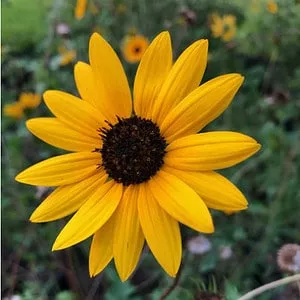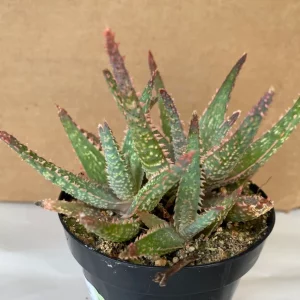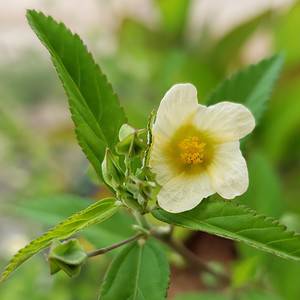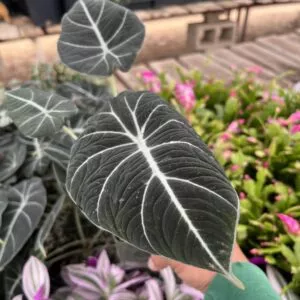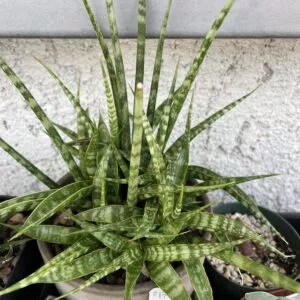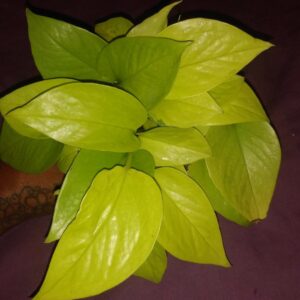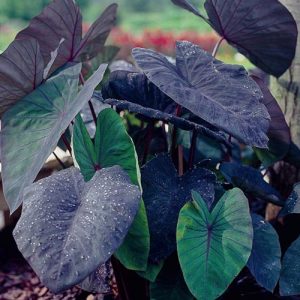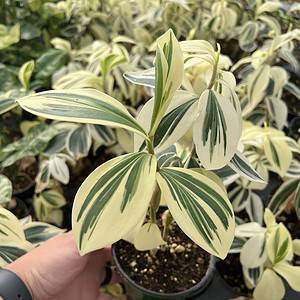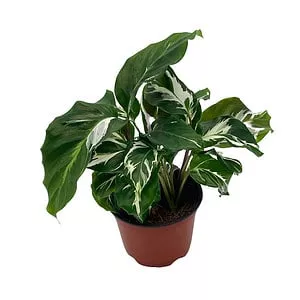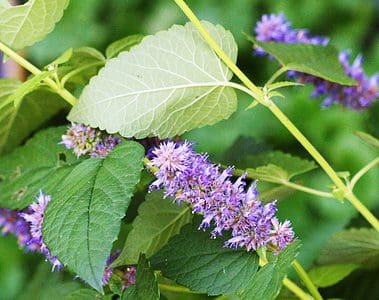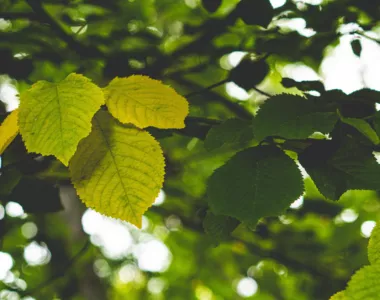No products in the cart.
Table of Contents
Hicks yew hedge is a low-maintenance evergreen shrub that works well in pairs in doorways and entries as a privacy screen or just mainly for decorative purposes.
What is Hicks Yew Hedge?

Hicks Yew (Taxus x media Hicksii) is famous in most northern regions of the United States. The plant is resilient to pollution and salt, making it ideal for growing in coastal and urban areas.
The evergreen shrub starts with a lightish green color during spring; in winter, the foliage covered with ferns remains dark green. While it displays flowers, they are not ornamental, with red drupes emerging in the early to fall months late. The fruits are called arils and are toxic to mammals.
Still, birds like vireos, flycatchers, and honeycreepers love the arils classified as fruit trees. Moreover, the Hicksii Yew shrub grows at a moderate pace at one foot per year in an upright form. Hence, controlling the hedge is easy, and it can reach 18 feet tall when mature.
You can keep the Hicks Yew pruned down to 12 feet tall with a width of up to 10 feet at its mature stage. It is also a multi-stemmed plant growing straight up, and you’ll need to practice your pruning to maintain the height and width.
Hicks Yew Quick Care Guide
- Soil Requirements: Well-draining soil, amend with organic matter if needed
- Light Needs: Tolerates full sun to full shade
- Watering: 1 inch per week for first two years, drought-tolerant when established
- Winter Care: Hardy zones 4-7 protect from winter winds and water until the ground freezes
- Pruning: Early spring before new growth, light pruning late summer
- Fertilizing: Use slow-release fertilizer at a low rate
- Pests/Diseases: Watch for root rot, weevils, scales, mealybugs – treat as needed
How to Care for Hicks Yew

The Taxus x media hicksii, with its flattened needles and fern-like foliage, is perfect as a foundation plant. Yet, the Hicks Yews plays different roles in a garden as it grows dense and looks glossy.
You can use the tall evergreen shrub as a backdrop plant, or you can use them on their own trimmed into ornamental topiary. Still, to enjoy the Hicks Yew shrub, it helps to care for them to last nearly a lifetime.
We are here to help with some detailed care tips on how you can make your Hicks Yew hedge remain looking great.
Ideal Soil Mix for Evergreen Shrub
Hicks Yew grows well in different types of soil. The important thing is providing the plant with soil drainage for growth. The plant does not like wet feet and will not grow. Therefore, maintaining a proper soil level is important to achieve well-drained soil.
When the soil drains too fast, you must water deeply often, while slow-drained soil results in other problems. Your plant can get stunted or diseased and have poor aeration, anchoring, compaction, and shallow root growth.
In stock In stock In stock In stock
$28.54
Sold By:
Carlo's Plant Farm
2 BLACK OIL SUNFLOWER SUNFLOWER SPROUTS – LIVE PLANTS
Rated 5.00 out of 5 based on 22 customer ratings00
Sold By:
Carlo's Plant Farm
Free Shipping
$16.00
Sold By:
CZ Grain
32+ Thin Gold Weeping Willow Tree Cuttings. Pencil Size or Smaller. Salix Babylonica. Grow 32 Golden Weeping Willow Trees
Rated 4.60 out of 5 based on 156 customer ratings02
Sold By:
CZ Grain
$38.99
Sold By:
Succulent Oasis
Succulent Plant Medium Aloe ‘Purple Haze’ Hybrid
Rated 4.84 out of 5 based on 352 customer ratings00
Sold By:
Succulent Oasis
Free Shipping
$39.99
Sold By:
Aloha Hawaii Orchids
$44.99Okika Flower: Captivating Fragrance & Visual Splendor
Rated 4.65 out of 5 based on 268 customer ratings00
Sold By:
Aloha Hawaii Orchids
Planting Site Preparation
Before you plant, Hicks Yew is to test the drainage of the soil using a soil test kit. You can do this by digging a 1-foot deep hole and filling it with water. Once the water drains, then fill it up again.
Take a timer and tape measure to see how many inches of water drains from the hole after 20 minutes. Next, multiply that number by three to discover how many inches of water drains in an hour.
The recommended water drainage is about two to six inches per hour. If the number is less than two inches, you have poorly drained soil that results in waterlogging. If it is more than six inches, the water drains too fast, leading to drought conditions.
Improving excessive soil drainage helps to add organic matter as it retains moisture in the soil. For example, add coconut coir, compost, or peat moss to the ground. Another helpful tip is to add mulch to prevent evaporation from taking place, keeping the soil moist for longer.
If you need to improve drainage, you can create French drains that are trenches filled with gravel or rocks to divert the water away from the planted areas of your Hicks Yew. In addition, creating a downward channel with commercial landscape fabric keeps dirt away from the plant.
Another tip for drainage is using raised beds to elevate the ground, built with wood, rocks, or concrete blocks, as they increase the soil level to about six inches above the ground.
Hicks Yew Lighting Needs and Site Location
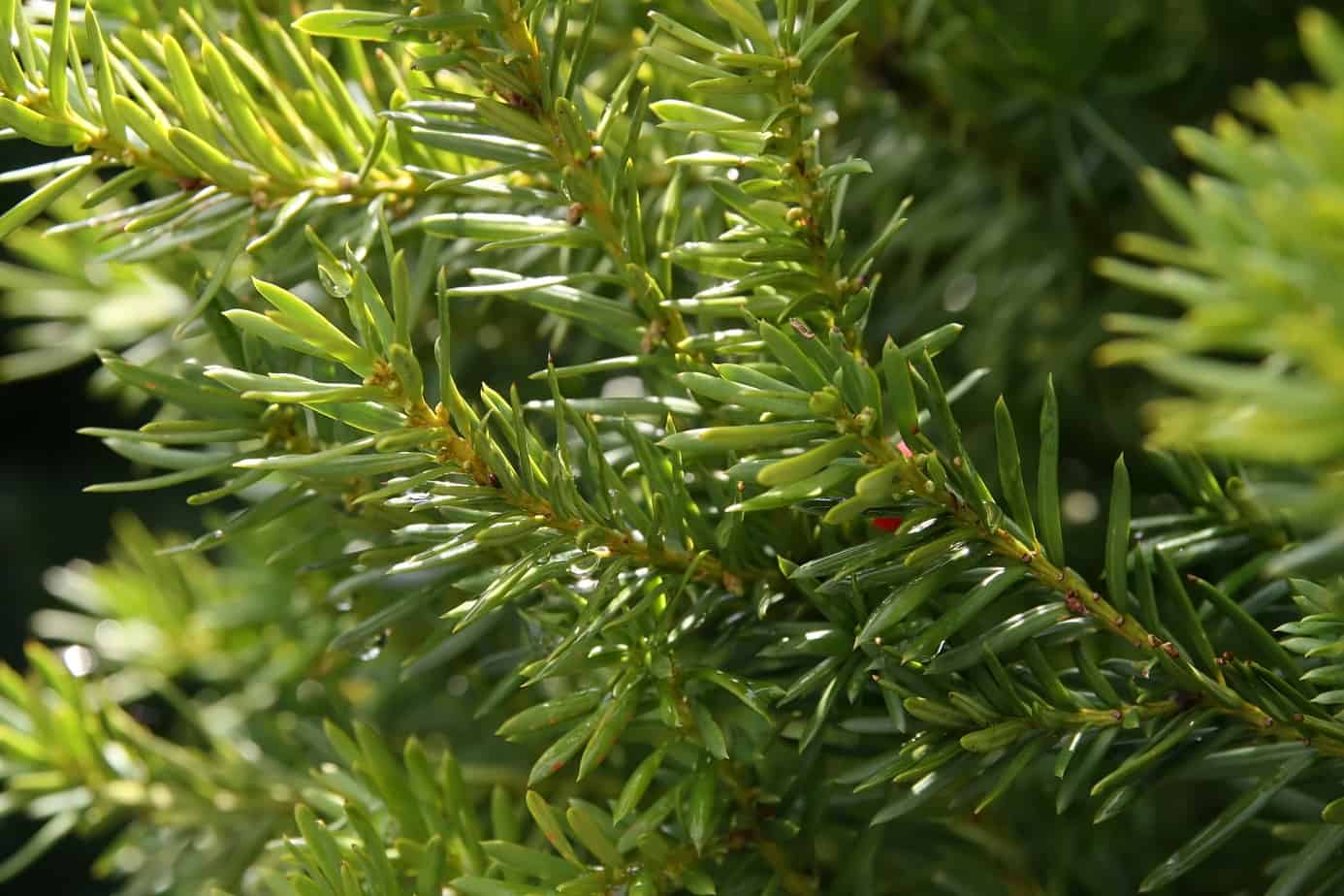
One thing you will love about Taxus x media hicksii is its high tolerance for different light exposures. You can plant the Hicks Yew in full sun or full shade.
Hence, you can choose a location that works for your landscaping project. The important thing is to have improved soil for the best growing conditions.
Watering Needs of your Hicks Yew Bush
When your Hicks Yew reaches its mature stage, it is drought tolerant. You only need to water it about one inch weekly in hot or dry weather for the first two years after planting. You can install a drip irrigation system to flow to the root ball directly.
In stock In stock In stock In stock
Free Shipping
$3.50 – $8.00
Sold By:
Chill Hill Farms
Fanpetal | Wireweed | Sida Ulmifolia | FL Native
Sold By:
Chill Hill Farms
Free Shipping
$39.99
Sold By:
Aloha Hawaii Orchids
$44.99Dendrobium Pinwattana Comes in 4″ Pot
Rated 4.65 out of 5 based on 268 customer ratings00
Sold By:
Aloha Hawaii Orchids
$4.59
Sold By:
Cacti and Exotica
Haworthia fasciata variegata | 2″ Pot
Rated 4.98 out of 5 based on 59 customer ratings00
Sold By:
Cacti and Exotica
$15.00
Sold By:
Cacti and Exotica
Alocasia Black Velvet
Only 10 available and it’s in 4 people’s basket Rated 4.98 out of 5 based on 59 customer ratings00
Sold By:
Cacti and Exotica
Early Sring and Winter Care
When you live in USDA hardiness zones four to seven, this shrub is hardy to grow. You can plant them anytime, from early spring, summer, winter, to fall. Still, it is best to avoid planting the Hicksii Yews when superheated outside unless you keep it well-watered.
Furthermore, Hicks Yew hedge is susceptible to winter burn and needs protection from the winter winds. You can wrap them with a burlap barrier from icy winds. Another important thing during winter is watering your plant until freezing starts.
If you want to shape or shorten your shrubs, you can prune them before new growth appears in early spring. Or give them a light pruning in late summer and avoid pruning in fall when pruning evergreens can cause winter injury.
Also, remember learning to prune annually from early spring to the beginning of fall.
Applying Fertilizers for Hicks Yew Hedge

Hicksii Yew is not a heavy feeder. The best is to use a slow-release fertilizer diluted at a low rate. Using one will help improve a faster growth rate.
Propagating Hicks Yew
You can root your yew trees using semi- or hardwood cuttings. Taking semi-hardwood cuttings in spring and summer roots faster but fails if you do not provide them constant care.
Clean a six-inch pot with pruning shears and a utility knife with warm, soapy water.
Fill the container with half-coarse sand, perlite, half-coir, or peat moss, and leave it in a shaded area.
According to Texas A&M University, the best cuttings are ones slightly hardened, taken up to ten inches back from the stem tip, according to Texas A&M University. Choose one with no fruit or flower and one with a stem that is 1/4 inch thick.
Remove the needles along the bottom. Then, scrape off the silver from the bark at the base with a utility knife.
Dust the cut end with rooting hormone and give it a light tap to remove the excess talc.
Make a planting hole deep enough to hold the bottom section and stick it into the hole.
Push the soil against the stem and give it water.
Keep the cutting in a place with a consistently warm temperature and moist until new growth appears.
Then transplant the Hicks Yew cutting into a gallon pot filled with soil one month after rooting. Please leave it to grow in dappled shade for a year before planting it in the garden.
Hicks Yew Hedge Varieties
If you are looking for a low-maintenance plant with a columnar shape similar to Hicks Yew, you can look at these varieties available.
In stock In stock In stock
$12.00
Sold By:
Beauties & Beasts
Cactus Succulent- Sansevieria fernwood -Succulet
Rated 4.83 out of 5 based on 24 customer ratings00
Sold By:
Beauties & Beasts
$6.00
Sold By:
Smoot's Farm
Succulent Gasteria Ox Tongue 2″ Pot Live Plant
Rated 4.89 out of 5 based on 27 customer ratings00
Sold By:
Smoot's Farm
$15.00
Sold By:
Stripes and Variegations
Echinocactus grusonii – Golden Barrel Cactus 4″ Pot
Sold By:
Stripes and Variegations
English Yew

It is an ornamental shrub or tree belonging to the Taxaceae family. The plant has spreading branches with drooping branchlets and reddish-brown bark. You can trim the yew shrub into a hedge.
Japanese Yew

The plant looks its best grown in masses, making a lovely hedge, and also works well for foundation planting. It has dense foliage that forms a screen, or you can allow it to grow in its natural shape.
This is another evergreen known as an understory shrub and is highly shade-tolerant. When the shrubs grow, they form sprawling growth and flat needles with pointed tips.
Hicks Yew Hedge Diseases and Pests
While many gardening sites inform you that the Hicks Yew is not a haven for pests or disease, you can still find some problems in this shrub.
Infections caused by Fungi Root Rot
If your Hicks Yews start showing a decline or lack of vigor, you will notice the needles looking chlorotic or dropped and stunted. In addition, the twigs show a sign of dieback, and the roots are discolored. In extreme cases, dying back can be caused by root rot.
This results from soil that is too wet, and recovery is unlikely. Still, it would be best if you tried to protect other surrounding plants using drenches or fungicide sprays. In addition, you can prune the dying or dead foliage to help prevent other invaders from causing more problems to your trees.
Other signs of root rot are yellowing foliage with stunted growth and needle drop resulting from wet soil.
In stock In stock In stock In stock (can be backordered)
$20.00
Sold By:
Soul Peace Gardens
Soul Peace Bundle-Neon
Only 1 available and it’s in 1 people’s basket
Sold By:
Soul Peace Gardens
$26.95
Sold By:
Wonka Plants
$36.00Colocasia Black Magic
Rated 4.94 out of 5 based on 108 customer ratings00
Sold By:
Wonka Plants
Free Shipping
$35.00
Sold By:
TRF Tropicals
Cheilocostus Variegated
Only 4 available and it’s in 1 people’s basket
Sold By:
TRF Tropicals
$199.00
Sold By:
Plantae Fascinatio
$299.00Monstera Albo Borsigiana “White Tiger” Lineage Double Node Cutting
Only 4 available and it’s in 1 people’s basket Rated 4.85 out of 5 based on 41 customer ratings14
Sold By:
Plantae Fascinatio
Insects:
Black vine weevil
These insects feed on the roots, and the foliage turns yellow to brown. The adult insects are about 1/2 inch long and black with a beaded appearance.
They overwinter on the plants emerging when spring arrives to feed and lay eggs. You can control the pest by treating the soil with pathogenic nematodes to help contain the larvae.
When adult feeding takes place, you can use acephate or fluvalinate.
Scale
The insect you find the female producing long white cotton eggs on the underside of the leaves, mostly in late spring. You can apply a horticultural oil like neem during the dormant season and with deltamethrin in summer. For bee-attractive plants, you can use products with acetamiprid to manage these scales.
Mealybugs
This insect also creates a white cottony egg mass on leaf surfaces and the axils. This is because they suck out the sap of the plant. You can treat them with insecticidal soap or neem oil.
Winter damage
Sometimes, you will notice browning around the plants with severe winters. Yet, if the buds remain green, you might see recovery in spring.
The shrub is also sensitive to the salts used for snow on sidewalks and roadways. You will only notice the signs when the salt washes into the ground in spring.
You can reach the soil using large quantities of water.
Frequently Asked Questions
The best is to grow your Hicks Yews in full sun with partial shade as the full shade can result in thinning of the foliage. You can also provide them with fertilizer once a year in spring using a slow-release fertilizer.
The best time to trim your Hicks Yews is when they are dormant in late winter before the growing season starts. Then, you can give them a light pruning in late summer after the growing season ends.
Yews species have different root systems, but many have deep and widespread roots.
Hicks yews can turn brown for a few reasons, such as inadequate watering, excessive sun exposure, or fungal diseases. Properly adjusting the soil moisture levels, providing partial shade if needed, and treating any underlying diseases can help revive the browning Hicks yews.
Whether you want to buy, sell or simply reach out to other plant enthusiasts, Plantly is the right place to be!
In stock In stock In stock In stock
Free Shipping
$13.95
Sold By:
SunSoul Plants
$20.95Callisia Fragans, ‘Family Doctor’ live plant – in 4″ pot, free shipping
Rated 4.87 out of 5 based on 98 customer ratings00
Sold By:
SunSoul Plants
$15.99
Sold By:
BubbleBlooms
Calathea White Fusion, 4 inch, Rare Variegated Prayer Plant, Cathedral Plant, Green and White
Only 9 available and it’s in 1 people’s basket Rated 4.81 out of 5 based on 279 customer ratings00
Sold By:
BubbleBlooms
Free Shipping
$39.95
Sold By:
CKK PRODUCTS LLC
$59.95Bare Root FUYU PERSIMMON – 2 Feet tall or more! –
Rated 5.00 out of 5 based on 1 customer rating00
Sold By:
CKK PRODUCTS LLC
$50.00
Sold By:
Southern Oak Exotics
Anthurium Warocqueanum Seedling
Only 16 available and it’s in 3 people’s basket
Sold By:
Southern Oak Exotics
